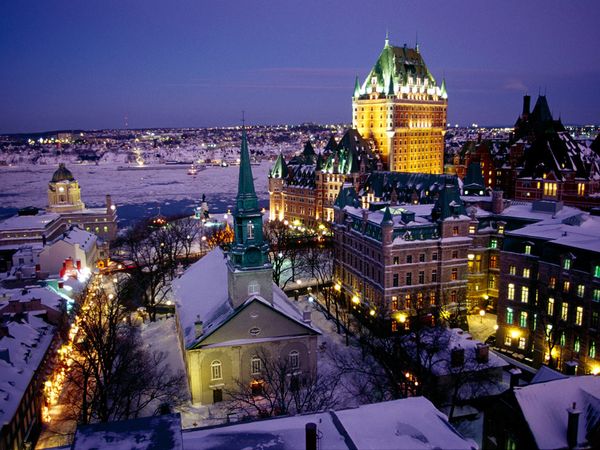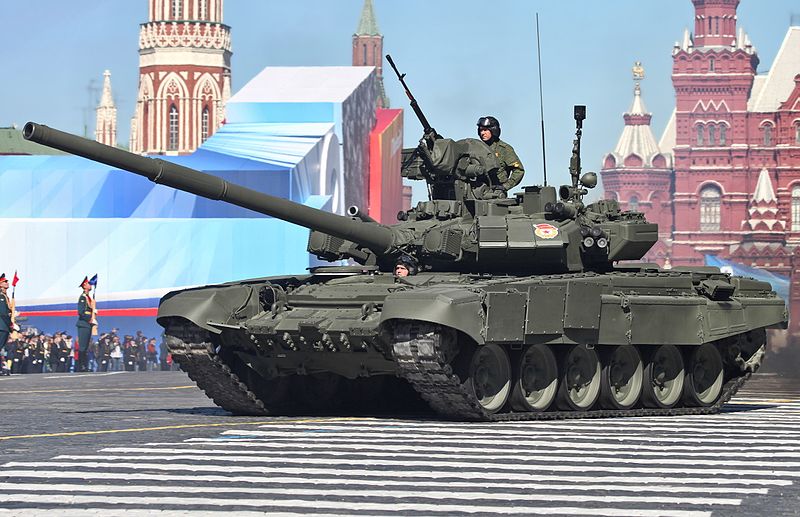
As mentioned in Part I, the Revolution Tranquille (quiet revolution), a massive Québec societal upheaval drastically changed life in the province. Part II will explain its effects.
Catholic Action and the Rise of New Lay Elites
The arrival of the Révolution tranquille heralded the final elevation to power of new elites that had been forming in Québec for most of the half-century before the provincial election of 1960. One of the first scholars of Québec to point out this change was the sociologist Jean-Charles Falardeau.
According to Falardeau, these elites composed two broad categories: one, flowing out of the universities, was poised to enter the expanding state bureaucracy; and another was rising swiftly through the previously English-speaking ranks of business executives. A salient fact Falardeau alludes to is that many of those who ascended into the new elites had gained their formative organizational experience as leaders of various movements of Catholic Action (“anciens dirigeants de l’action catholique”).[1]
The Catholic Action arose almost one hundred years ago out of the direction of Catholic energies to the task of “social reconstruction.”[2] The call to the service of God on earth (and thereby the transformation of the world) was not limited to the clergy or religious, the Catholic Church taught, but was to involve all Catholics, no matter what their status or station. Their work, in turn, was to be pursued through group action that was “specialized” to the social milieu of the believer.
Members of Catholic Action met regularly in intimate settings, in the absence of the clergy, to read Scripture and to divine its meanings for modern times. They thus learned not merely how to organize themselves, but also how to plan in groups; how to reflect, discern, debate, and decide in a free and autonomous manner; and how ultimately to orchestrate outreach activities.[3] Imbued with Catholic Action’s decision-making method of “See-Judge-Act,” veterans of the movement, including such luminaries as Pierre Juneau, Marc Lalonde, Jean Le Moyne, Gérard Pelletier, Claude Ryan, and Jeanne Sauvé, consequently went on to careers in the media, government, and civil society of Québec.
As Catholic Action reached its historical zenith in Canada, the seeds were sown for a very different type of society in francophone Québec, one that would be revealed more fully by the 1960s, at the first opportunity for liberalization of political leadership, of basic schooling and of the values of the workplace. Religious men and women, many with advanced training, were streaming from the monasteries and convents of Québec and moving unimpeded into positions within the mushrooming public bureaucracies of education and social service, as well as into increasingly broad-based private corporations. They joined there laypersons whose own fidelity to Catholicism encouraged a devotion to constructing the ‘Kingdom of God’ in the world of mundane affairs. With the onset of the Révolution tranquille, then, the social doctrine of the Church henceforth not only admitted the necessity of an expanded intervention by the State, it even went so far as to encourage lay people to work fervently for it. And so that the laity could make of the State a genuine setting for the embodiment and blossoming of spiritual values, the Church gave up its drive to influence temporal structures directly.
The sociological irony of Québec’s secularization thus came to a proper fruition: it was not at the hands of modern doubters and scoffers at religion that the core of Québec society was evacuated of the Catholic Church’s once-dominant presence, but rather through the faith-filled intentions of religious-motivated and socially-committed Catholic laypersons and of onetime professional operatives of the Church itself. The knowledge of coordination; the facility with organizational personnel, funding, and communications; and the skill at administration that time spent in Catholic associations (and, to a different degree, in Catholic communities of men and women) had bestowed on the faithful were all transferable assets. They constituted a kind of human capital that, when eventually cashed, dislodged the Catholic Church from its paramount position in Québec society.
Many social institutions experienced transformation due the Révolution. No longer, then, was the power to define and to alter Québec’s culture lodged exclusively in the Catholic Church. In the eyes of countless observers and commentators, the power to interpret Québec’s provincial patrimony and to address its national destiny belonged to the new experts of a government and a private sector that spread in tandem throughout the middle part of the twentieth century. “The great majority of the architects and implementers of Québec’s entrance into the modern world and prosperity…are also the principal people responsible for the considerable weakening of the very institution that put them into the world,” namely the Roman Catholic Church.[4]
Evidence of a Declining Faith with Hallowed Residue
On the surface, the Catholic Church in Québec felt the effects of an astonishing pattern of ‘secularization’ after the 1960s. The internal records of the Canadian Conference of Catholic Bishops show that, between 1966 and 1988, the number of diocesan priests in Québec decreased by more than one quarter, from approximately 8,800 to 6,400.[5] By 2005, they numbered 2,700. The same trend has occurred among the religious orders for both men and women. Ordinations, which hit their high point in 1963, when 127 priests were consecrated for Québec, dwindled to the degree that in 1988, merely seventeen men received holy orders.[6]
Moreover, in the last fifty years, rates of participation in religious services have declined everywhere in Canada. A Gallup Poll conducted in 1946 found that two-thirds (67 per cent) of Canadian adults attended religious worship in a typical week, but a similar survey in 1996 showed that this proportion had dropped to 20 per cent.[7] Over the decade separating 1988 and 1998, those who attended church at least once per month fell from 41 to 34 per cent of the Canadian adult population.[8] This dissipation of devotion was especially acute in Québec, where monthly attendance plummeted from 48 per cent in 1986 to 29 per cent by 1998.[9]
With respect to attendance at Mass, which for many believers is the hallmark of Catholic identity, the data from Québec is unremittingly negative. The earliest Canadian survey on record that invited self-reports of church attendance, a Gallup Poll from 1945, suggests that at the end of the Second World War, nearly nine out of ten Catholics in Québec went to Mass on a weekly basis.[10] This impressively high rate of Mass attendance held fairly steady through the next two decades: in 1957 it stood at 88 per cent and in 1965 at 85 per cent. But by 1970, the percentage of Québecers attending weekly had decreased sharply to 65.
It is important to note, however, despite the decline of the Church and State in Québec, there was no significant change with the almost unanimous rates at which Québec Catholics, then and now, profess to believe in the existence of God and the divinity of Jesus Christ, and the overwhelming majorities who confess a personal habit of at least occasional prayer.[11] Indeed, Québec is not as secular as the contemporary media makes it out to be. The French-Canadian nation is still, in fact, a land of Catholicism. According to a 2008 Léger Marketing poll, the proportion of Québec’s nearly six million Catholics who attend mass weekly now stands at 6 per cent, the lowest of any Western society.[12] But therein lies a paradox. That more than 80 per cent of Québecers still declare themselves Catholics, according to the 2001 census, suggests an attachment to the faith, if not a spiritual one, at least a cultural one.[13]
Québec and Laïcité Today
The flurry of frenetic activity over the course of Québec’s history has left a permanent mark, so that in our day the Révolution tranquille primarily signifies not the growth of the Québec state or the rationalization of its services – although these did occur – but the veritable coming-of-age of a people in its belated encounter with modernity.[14]
To assume, however, that religion is Québec’s greatest foe, and that forbidding public servants to wear religious symbols (as is the case today) is somehow a victory for provincial identity – is an unfortunate misreading of history. The Révolution tranquille put thousands of clerics out of jobs and hundreds of churches onto the real estate market, but it did not necessarily eliminate religion in the province. Instead, it gave people the freedom to practice informally, experimentally, and on their own terms. It was a victory for religious freedom over institutional control – which is why former Québec Premier Pauline Marois’s Charte des valeurs québécoises is so profoundly misguided.
Indeed, although the Révolution was inspired by and promoted some complaints against religion, even anticlericalism, there was no massive rejection of religion by early modernizers. Even today, while only 29 per cent of Catholics attend mass on Sunday, most have retained their Catholic identity and insist on Catholic religious education for their children.[15] Other remnants of the Catholicism persist. Municipalities, for example, are still widely referred to as paroisses (parishes). Every saint, no matter how obscure, has a village or street named for him or her, from Cléophas to Tharcisius. The national holiday is officially known as la Fête nationale, but only bureaucrats, TV announcers and politicians call it that. To everyone else, it is still la Saint-Jean Baptiste. When you walk around Québec’s legislature, you will find plenty of Roman Catholic symbols too: the white cross on the Québec flag, the statues of missionaries – there is even a chapel a stone’s throw away from the Premier’s office, in a government building. Mass for civil servants is held there twice a week. Even inside the legislature itself, a crucifix hangs in the Blue Room, right above the Speaker’s Chair. It dates back to 1936, when Premier Duplessis decided to symbolically seal the bond between the government and the Catholic Church.
The aftermath of Révolution’s transition is highly visible in the reduced position of the Roman Catholic Church in contemporary Québec. Over time, the Church and its ubiquitous functionaries had consumed so much of the active space in the civil realm that for them, under pressure from an elite laity who had succeeded in mastering much of the same secular expertise, no measured withdrawal from power was possible. Instead, the retreat, while orderly, verged on the total, and a virtually complete cave-in of traditional structures ensued, leading to the dismal fate of institutional religion in the province today. Interestingly, Québec’s historical struggle with the Church is akin to many other Western societies of lapsed Catholics, which still show somewhat of an attachment to religious traditions without necessarily embracing the doctrine itself. As Charles Taylor writes in A Stillborn God, the most secular societies in the West also “retain the vestigial public reference to God in public space.” Québec is no exception.




